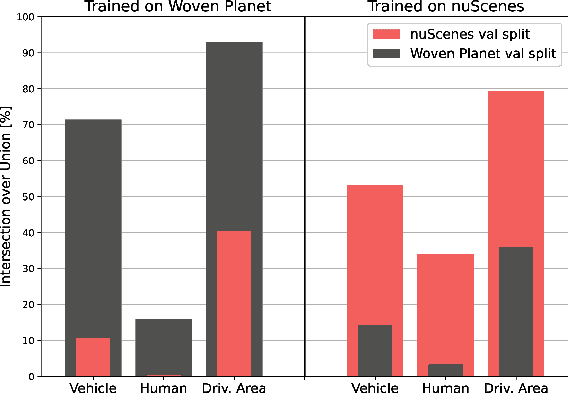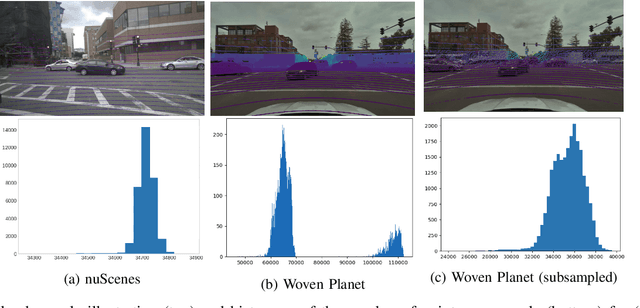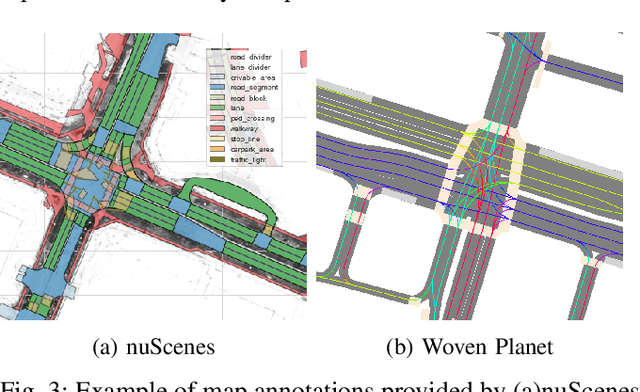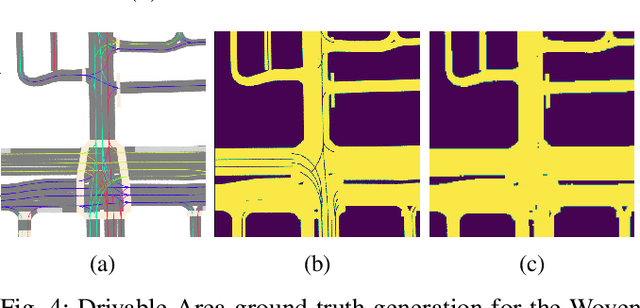Manuel Alejandro Diaz-Zapata
CHROMA
BEVal: A Cross-dataset Evaluation Study of BEV Segmentation Models for Autononomous Driving
Aug 29, 2024



Abstract:Current research in semantic bird's-eye view segmentation for autonomous driving focuses solely on optimizing neural network models using a single dataset, typically nuScenes. This practice leads to the development of highly specialized models that may fail when faced with different environments or sensor setups, a problem known as domain shift. In this paper, we conduct a comprehensive cross-dataset evaluation of state-of-the-art BEV segmentation models to assess their performance across different training and testing datasets and setups, as well as different semantic categories. We investigate the influence of different sensors, such as cameras and LiDAR, on the models' ability to generalize to diverse conditions and scenarios. Additionally, we conduct multi-dataset training experiments that improve models' BEV segmentation performance compared to single-dataset training. Our work addresses the gap in evaluating BEV segmentation models under cross-dataset validation. And our findings underscore the importance of enhancing model generalizability and adaptability to ensure more robust and reliable BEV segmentation approaches for autonomous driving applications.
LAPTNet-FPN: Multi-scale LiDAR-aided Projective Transform Network for Real Time Semantic Grid Prediction
Feb 10, 2023Abstract:Semantic grids can be useful representations of the scene around an autonomous system. By having information about the layout of the space around itself, a robot can leverage this type of representation for crucial tasks such as navigation or tracking. By fusing information from multiple sensors, robustness can be increased and the computational load for the task can be lowered, achieving real time performance. Our multi-scale LiDAR-Aided Perspective Transform network uses information available in point clouds to guide the projection of image features to a top-view representation, resulting in a relative improvement in the state of the art for semantic grid generation for human (+8.67%) and movable object (+49.07%) classes in the nuScenes dataset, as well as achieving results close to the state of the art for the vehicle, drivable area and walkway classes, while performing inference at 25 FPS.
 Add to Chrome
Add to Chrome Add to Firefox
Add to Firefox Add to Edge
Add to Edge